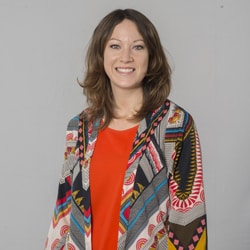 In a recent global study by McCann Health in partnership with McCann Truth Central, surveying nearly 2,000 doctors across 16 countries, 82% of doctors saw ‘providing care as their primary role in society’. However, it’s no secret that doctors are unable to spend the time they would like to with their patients. Recent reporting suggests that doctors spend as little as 27% of their working day with patients.
In a recent global study by McCann Health in partnership with McCann Truth Central, surveying nearly 2,000 doctors across 16 countries, 82% of doctors saw ‘providing care as their primary role in society’. However, it’s no secret that doctors are unable to spend the time they would like to with their patients. Recent reporting suggests that doctors spend as little as 27% of their working day with patients.
The traditional patient-doctor bond is being eroded as financial, administration, case load and ageing population pressures continue to mount and divert HCP attention away from the patient. This is juxtaposed with the empowered health consumers who, armed with more information about their health than ever, demand more personalised and connected care.
Collaboration is key
Many health organisations are looking to collaboration as a key driver to both relieve health system pressures and improve patient experience. Connecting HCPs enables smoother workflow, greater knowledge sharing and faster decision-making – ultimately making patient care better. Technology plays an obvious role in expediting this. Commenting on findings from the Truth About Doctors, Rodney Collins, regional director for EMA Truth Central, said: “We have an opportunity to help doctors reclaim mastery in patient care by using data and technology to liberate them to focus their invaluable time on care.”
Tech advances expediting change
The use of tech to collaborate and drive care coordination isn’t new. While pagers and fax machines of old have slowly been replaced with web platforms and apps, we are in a new era powered by AI, deep learning and bots.
Furthermore, the well-documented (and off the grid) use of WhatsApp among HCPs is also being replaced by more compliant systems. One such service that taps into both these trends is Medic Bleep, founded by Dr Sandeep Bansal. The platform allows HCPs to create groups, voice or video call, share patient data and find colleagues.
Dr Bansal says: “At the moment HCPs are fighting fires, bogged down with paperwork, faced with ineffective ways to communicate with their colleagues… they do not have enough time with patients. Doctors need to share responsibility with new stakeholders to gain back time where it matters most.
“We can add patient value using simple methods, swapping pagers and fax machines for instant messaging systems. This is something we’ve achieved with Medic Bleep using instant messaging that’s given doctors 31 more patient-facing minutes in their day. These technologies can drive collaboration and power shared care.”
The sharing economy among HCPs continues to rise. In 2016, Figure 1 (a medical photo-sharing app self-coined ‘the Instagram for doctors’) reached 1 million users, and the images shared by practitioners around the world to aid diagnosis and treatment have been viewed 1.5 billion times on its platform. They have also pushed into secure messaging.
The trend continues in other areas. Dr Zahid Siddique BDS MPharm and McCann Health’s expert strategy director says: “The digital revolution is impacting the practice of dentistry and pharmacy in multiple ways, from saving the dentist time through voice-activated clinical note-keeping, to online messaging platforms for patient recall and treatment adherence.
“Digital technology is not only driving the cost of healthcare down but is helping HCPs in all sectors from community pharmacies, primary care and secondary care to work more collaboratively and effectively to achieve the best outcomes for our patients.”
Pharma as part of the solution
Although the pace of change has been slow, there is now a booming community of health companies, start-ups and entrepreneurs driving advancement in how HCPs connect with each other. And there’s no reason why pharma can’t be part of this.
Great user experience is at the heart of new solutions. Technology that seamlessly integrates with day-to-day life is the most successful. It needs to feel natural and intuitive. We need to start with the why of technology, not the how.
So it really shouldn’t be much more complicated than defining the problem, co-creating the solution and finding great partners to work with in doing it. Building a meaningful (and modern) relationship means we can help HCPs get back to what they were born to do – care for patients.
Emily Brooks is engagement strategy director at McCann Health. To uncover how your brand can play a more meaningful role in the lives of doctors or to find out more about the Truth About Doctors get in touch with Emily via Emily.Brooks@mccann.com





